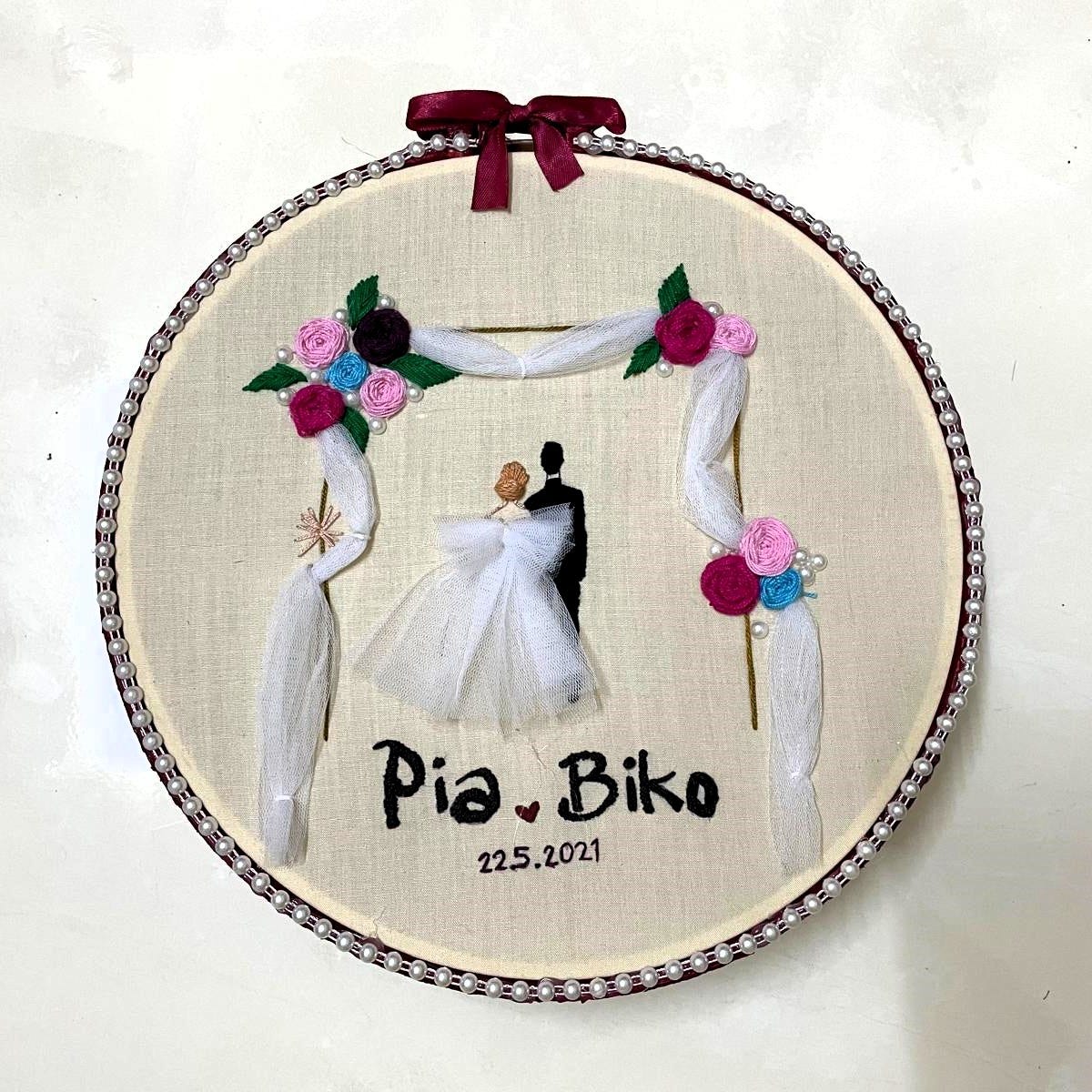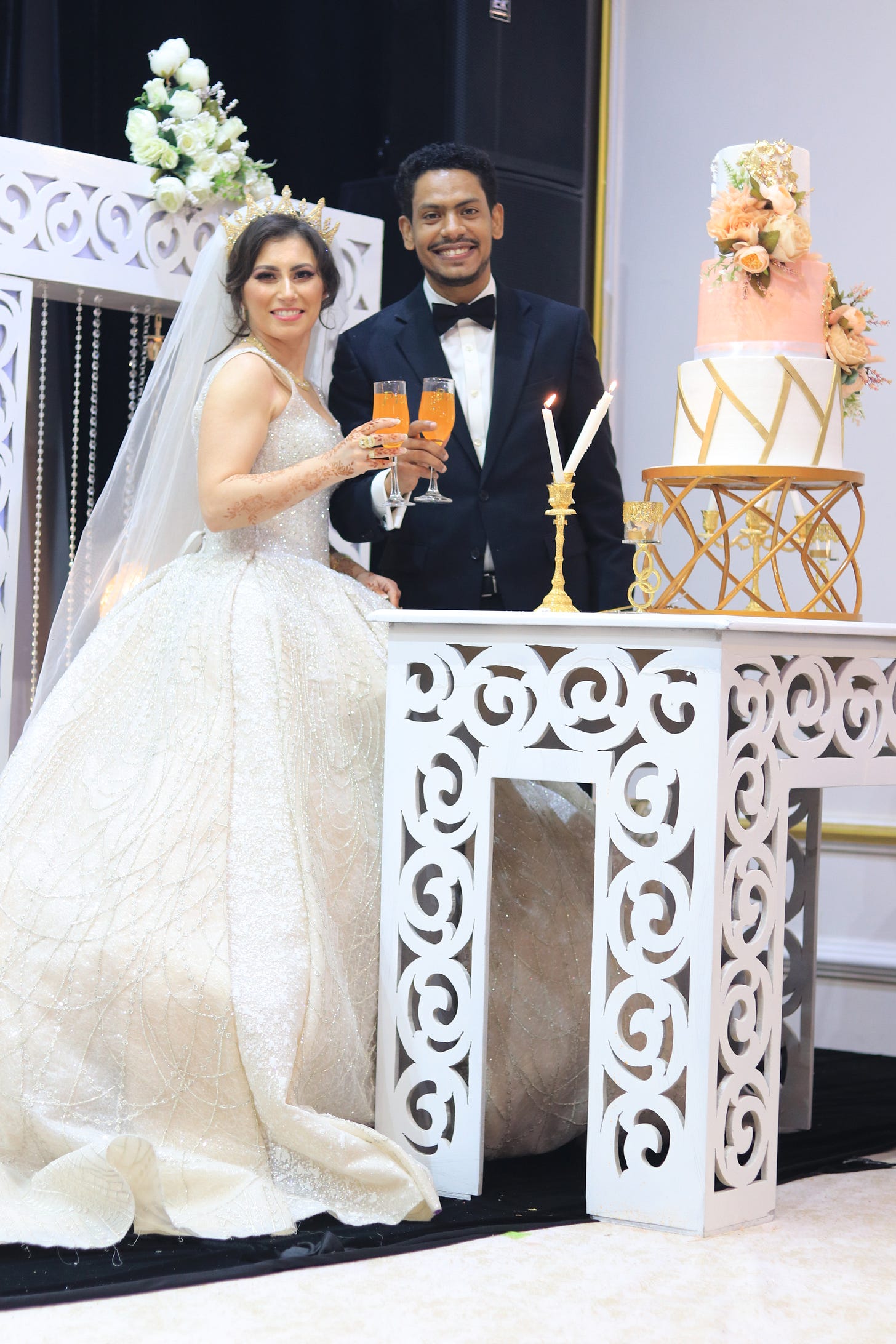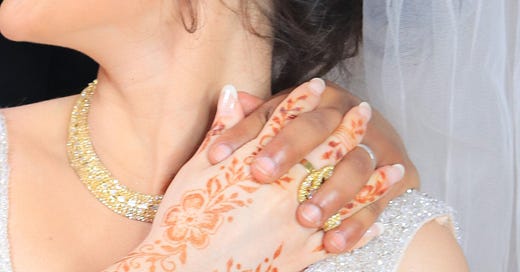Three-day Wedding: #3 Saturday
The difference between a Yemeni and an Argentinian wedding, the dispensable groom, and a uniquely beautiful experience.
When we got home after the last party, my brother-in-law asked me how different weddings were in Argentina. He was surprised when I told him we have only one party; well, maybe two if you count the small gathering after the civil ceremony.
In my hometown, couples usually get married at the civil registry’s office on Friday at noon, and then have lunch with family and friends to celebrate their union. It might be possible to pay an additional fee and get the registry official to go to a venue of your choice, but I don’t know anyone who has done it that way. I guess it’s a local tradition to go to the civil registry and sign the big marriage book in front of your family and closest friends. In some families, it is possible to find several generations that have the same wedding photo. Same background and furniture, you can only tell them apart by their fashion and hairstyles.
I told my brother-in-law that if it is a Catholic couple (Argentina is mostly a Catholic country), the religious ceremony takes place on Saturday evening. Due to the separation of church and state, the religious ceremony is not legally binding but for most people, this is the real wedding.
After the church, the guests go to the party venue and wait for the bride and groom, who are taking photos somewhere around town. A regular party would have about 150 guests, who socialize and enjoy finger food until the couple makes a big entrance and dances the waltz. The night continues with intervals of dance and food until 6 or 7 in the morning.
I told him to expect three food courses and explained that after dessert we have a “sweet table” full of cakes, fruit, candy, and sometimes ice cream. An Argentinian wedding can also include pizza or fries around 5 in the morning, in case someone is still hungry after so much dancing. And I added, don’t be surprised if after that there’s coffee and tea with pastries hot out of the oven.
My brother-in-law’s eyes got bigger and bigger with every new detail. He was both confused and amazed. At Yemeni weddings, the social aspect is way more important than food, and I can’t imagine how excessive my description must have sounded to him.

To our celebration that night, we invited 350 women. From 7 to 80 years old, they were family members, close and distant relatives, friends, acquaintances, and neighbors. It was from 7 to 11 in the evening and the catering included sweet pastries, sandwiches, and tea.
Biko and I were the first to arrive and were secluded in a private room so the guests wouldn’t see us. When all the women had arrived and strategically chosen where to sit to get the best view of the couple, we made our entrance.
The private little room had two doors. One opened to a side entrance and Biko walked to the big room with no one paying much attention. The other door led to a great staircase that descended to the center of the room into a catwalk platform with round tables on both sides. They had instructed me to walk as slowly as possible so that every woman could see me well. The truth is that I couldn’t have walked any faster, even if I wanted to. The fairy tale dress1 my nieces had picked for the big day was as gorgeous as it was heavy and hard to move in.
Biko’s smile met me at the end of the staircase, he held my hand and joined my slow pace while the women cheered and clapped. It made me happy to see familiar faces smiling back at me. A lot of the women that night had attended the Thursday party2 and they reminded me that from the 350 pairs of eyes watching my every move, many were friends who had come to celebrate me again.
We made it to the end of the catwalk and the lights went dim for our first dance. Then we cut the cake and that was it for Biko. His role became dispensable. The groom was only invited for the first half an hour of the party and when he left, I sat on a stage where women came in groups to greet me and congratulate me.

I had been practicing my Arabic all week to speak it with them. I was so disappointed when I realized they had been practicing their English and were excited to use it with me. I got very few “Mabrook”, congratulations in Arabic, and I didn’t mind saving my recently learned Arabic for another occasion. When most women had taken their turn wishing me happiness and love, the artist singing live asked me to come down to the dance floor and join the fun. We danced to her voice nonstop until the end of the party.
To them, I was the center of attention. To me, they were the protagonists of the night.
I was in awe with every song, every move, every moment. My first wedding in Yemen happened to be my own and it was a uniquely beautiful experience.
I told my brother-in-law I had felt like a guest of honor and, even if it sounds absurd, I was so grateful for the invitation.
📩 I’d love to hear from you and you can always reply to this email directly so we can connect. 🙂
✨ If you’ve enjoyed this story, you can share it with others you think might enjoy it too. You can also forward this email.
Thank you for reading me today.
Until the next story!
Pia
I tell you all about the market, my fear of getting lost, and the fairy tale dress in this story: “The Market and the Dress”.
Before this celebration on Saturday, I had a more intimate party on Thursday. I wrote about it in “Three-day Wedding: #2 Thursday”.
Did you know about all these Yemeni traditions? Would you like a wedding in Yemeni style?




Thank you for sharing with such details, you transported me! What a magical and beautiful moment ❤️